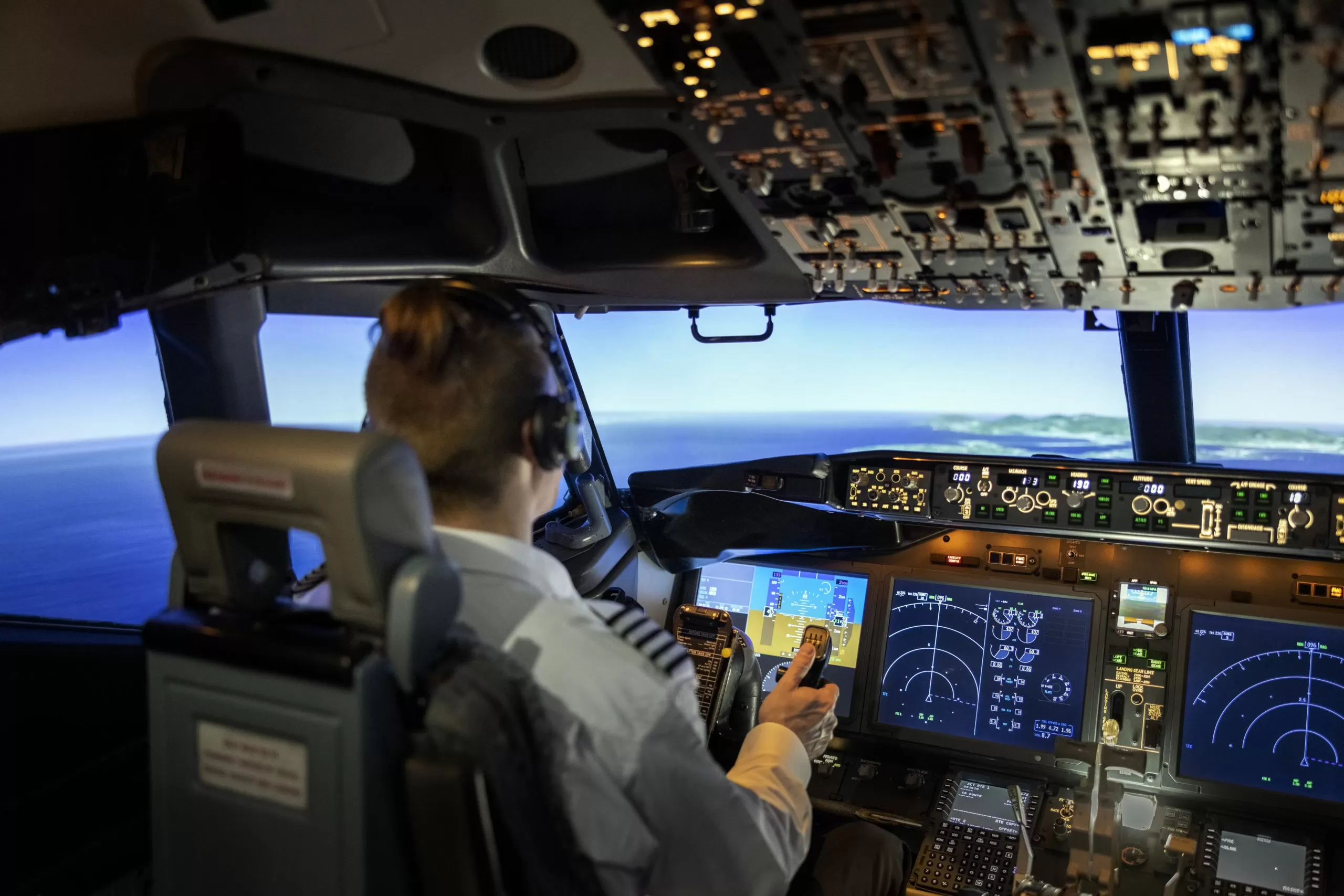Avionics, a combination of the words “aviation” and “electronics,” refers to the electronic systems used in aircraft to enhance their capabilities and improve flight safety. It include communication, navigation, and flight control systems, as well as other systems such as weather radar and collision avoidance. Avionics has revolutionized the aviation industry, making air travel safer, more efficient, and more reliable than ever before. In this blog post, we’ll provide an overview of avionics, discuss their components, explain the difference between aviation and avionics, and explore its real-life examples in action.
History of Avionics
The history of avionics dates back to the early days of aviation, when pilots relied on basic instruments such as altimeters and airspeed indicators to navigate through the skies. However, with the advent of radar and other advanced technologies during World War II, its systems began to evolve rapidly.
Early avionics systems included radio navigation aids such as the VOR (VHF omnidirectional range) and ADF (automatic direction finder), which allowed pilots to navigate more accurately and efficiently. In the 1950s and 1960s, the introduction of the jet engine led to the development of new systems, including autopilots and flight management computers.
Since then, avionics technology has continued to advance at a rapid pace. Today, its modern systems include sophisticated flight management systems, GPS (global positioning system) navigation, and advanced communication and data-link systems. These systems have revolutionized air travel, making it safer, more efficient, and more reliable than ever before.
Components of Avionics
Avionics systems are comprised of various components that work together to provide critical information to pilots and enhance the safety and efficiency of flight. Some of the key components of avionics systems include:
Communication Systems
These systems allow pilots to communicate with air traffic control, other aircraft, and ground personnel. Communication systems include radios, transponders, and data-link systems.
Navigation Systems
Navigation systems provide pilots with information about their position and heading. Modern navigation systems use GPS (Global Positioning System) technology, which allows for precise and accurate navigation.
Flight Control Systems
Flight control systems provide pilots with control over the aircraft’s attitude and movement. These systems include autopilots, fly-by-wire systems, and other advanced technologies.
Other Systems
Avionics systems also include other components such as weather radar, collision avoidance systems, and terrain awareness systems, which help pilots to avoid dangerous weather conditions, obstacles, and other potential hazards.
Each of these components plays a crucial role in ensuring the safety and efficiency of flight, and together they make up the complex and sophisticated avionics systems used in modern aircraft.
The Difference between Aviation and Avionics
While often used interchangeably, the terms “aviation” and “avionics” actually refer to two different aspects of aircraft operation.
Aviation refers to the operation and maintenance of aircraft, including pilots, mechanics, ground crews, and other personnel involved in the industry. It encompasses all aspects of flight, from takeoff to landing, and includes the design, manufacturing, and testing of aircraft.
Avionics, on the other hand, refers specifically to the electronic systems used in aircraft, including communication, navigation, and flight control systems. Its technology has revolutionized the aviation industry, making air travel safer, more efficient, and more reliable than ever before.
While avionics is just one aspect of aviation, it is a crucial one that has transformed the way we fly. Today, pilots rely on its sophisticated systems to navigate, communicate, and control their aircraft, and the aviation industry continues to push the boundaries of technology to make air travel even safer and more efficient.
Examples of Avionics in Action
Avionics systems have transformed the aviation industry, making air travel safer, more efficient, and more reliable than ever before. Here are some of its real-life examples in action:
GPS Navigation
Modern avionics systems use GPS (global positioning system) technology to provide pilots with precise and accurate navigation. GPS has revolutionized air travel, making it possible for pilots to navigate more efficiently and avoid potential hazards.
Weather Radar
Weather radar systems allow pilots to detect and avoid dangerous weather conditions, such as thunderstorms, turbulence, and icing. This technology helps to ensure that flights are safe and on time.
Fly-by-Wire Systems
Fly-by-wire systems use electronic signals to control the movement of an aircraft, replacing traditional mechanical systems. This technology provides pilots with greater control over the aircraft and improves flight safety.
Collision Avoidance Systems
Collision avoidance systems use sensors and advanced algorithms to detect potential collisions with other aircraft and provide alerts to pilots. This technology has helped to prevent many dangerous situations in the air.
These are just a few examples of how avionics systems are used in aircraft to enhance flight safety and efficiency. Providing pilots with critical information and greater control over their aircraft has transformed the way we fly and have made air travel safer and more reliable than ever before.
Avionics at Wings Over Camarillo
Avionics, the electronic systems used in aircraft, have revolutionized the aviation industry, making air travel safer, more efficient, and more reliable than ever before. In this blog post, we’ve explored its history, discussed its components, explained the difference between aviation and avionics, and provided examples of how its systems are used in aircraft.
As we’ve seen, avionics technology has transformed the way we fly, providing pilots with critical information and greater control over their aircraft. By improving navigation, communication, and flight control, avionics have made air travel safer and more efficient than ever before.
If you’re interested in learning more about avionics and its role in aviation at Wings Over Camarillo, there are many resources available online and in person. Consider exploring online courses or attending industry events to learn more about this fascinating field.
In conclusion, avionics are a critical component of modern aviation, and their significance will only continue to grow as technology advances. By understanding its importance, we can appreciate the incredible advancements that have been made in the aviation industry and look forward to even greater innovations in the future.
Ready to Soar with Us?

